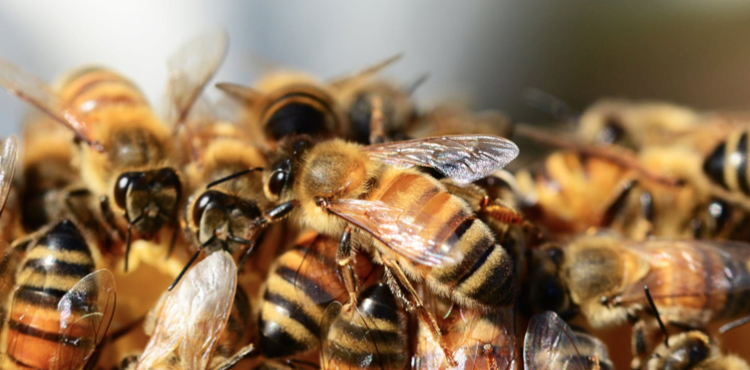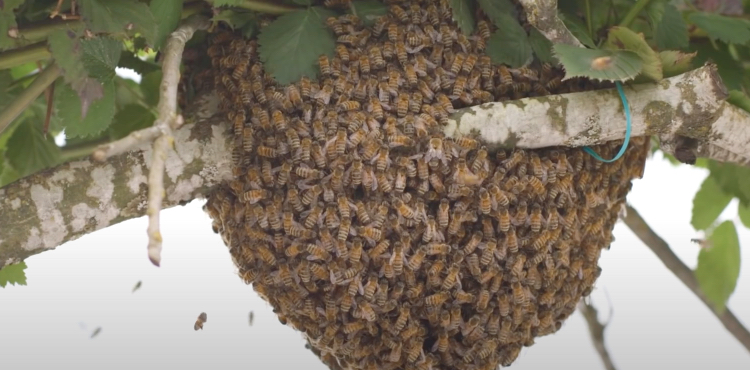Our modern understanding of honey bee biology makes some of the ancient beliefs about honey bees seem pretty humorous.
We probably shouldn’t laugh too hard, though.
After all, we wouldn’t know what we know today about bees without the knowledge passed down from our ancestors.
Each generation builds upon the knowledge of the previous generation, and so owes a debt of gratitude to the efforts of its forebears.
Besides, there’s plenty that we still don’t understand about honey bees. Some future generation may be laughing about our lack of knowledge about bees!
That said, I think we can be excused a chuckle or two!
Where do honey bees come from?
Why, honey bees come from the rotting carcasses of dead animals, of course!
That’s what people used to think, and it was a belief that lingered in some regions for thousands of years, until as late as the mid-1800s.
No doubt this particular belief about honey bee biology came about from swarms settling in the natural shelter that the carcass of an animal might provide, at least in the intermediate stages of decay.
(Remember the Old Testament account of Samson finding a swarm of bees in the carcass of a lion he had killed earlier?)
The Greek philosopher Democritus (460-370 B.C.) even wrote up explicit instructions on how to get a swarm of bees from an ox: “Kill an ox and confine it in a one-room building, closing with clay every opening.
Then open the building on the 32nd day and you will find it full of bees, crowded in clusters on each other, and the horns and the bones and the hair and nothing else of the bullock left.”
He goes on to state that the “kings” are produced from the brains and spinal marrow, while the ordinary bees are produced from flesh.
Another ancient belief about the origin of honey bees was that the bees gathered their larvae from the leaves and blossoms of plants, carrying them back to the hive to be raised into adult bees.
As late as 1679 A.D., Moses Rusden (beekeeper for King Charles II) wrote that bees gathered “the actual corporal substance of the young bees” from flowers.
Certainly less distasteful than the rotting carcass theory, but no less incorrect.
Who Rules the Hive?
The true function of the queen in honey bee biology was not understood until fairly recently. For most of the history of beekeeping, the queen was thought to rule the colony in the same way that a human monarch rules a nation.
In 400 B.C., the Greek historian Xenophon described the ruling activities of the queen: “While she stays in the hive, she does not allow the bees to get lazy, but sends out those who have to work outside, observes what they bring in, takes it and stores it until it can be used.
When the time comes she divides it fairly well to each one. Further she supervises the building of the combs in the hive and she sees to it that they are constructed well and pretty and that the brood is reared in an orderly way.”
Aristotle believed that there were multiple rulers within a hive, and that the well being of the hive depended upon having neither too many nor too few rulers.
And the Roman poet Virgil advised that clipping the wings of the ruler would prevent swarms from being led away from the hive by the ruler.


